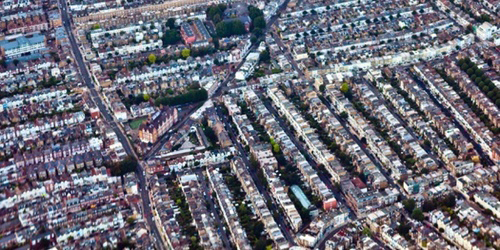Fractal London
Fractal patterns repeat themselves over different length scales: If you zoom in on one small portion of a fractal, you’ll find a motif nearly identical to the pattern as a whole. They can be hypnotic to look at, but fractals are more than just pretty pictures. Their geometry can describe a plethora of structures, from the branching of blood vessels and brain cells to the shapes of rivers and coastlines. Roberto Murcio and collegues at University College London, UK, now demonstrate how London’s fractal network of streets has changed from being multifractal, scaling spatially according to multiple rules, to monofractal, with a single scaling rule.
The researchers analyzed nine digitized maps of London from 1786 to 2010 using a statistical approach that estimates the number of street intersections within the city. They found that from 1786 to 1920 the city was multifractal, that is, it had a heterogeneous distribution of street intersections with just as many areas having a lot as having only a few. After 1920, the network gradually lost its multifractality, and by 2010 it had become nearly monofractal with a homogeneous distribution dominated by regions with multiple intersections. The authors argue that the loss of multifractality was caused by the “green belt” of countryside around the city, which was introduced in the mid-1950s to contain urban sprawl. This led to the network only being able to expand by filling in the space delimited by the belt. While it’s unclear whether a monofractal city is functionally better than a multifractal one, or vice versa, these findings provide a step towards understanding the consequences of urban-growth policies on the morphology of modern cities.
This research is published in Physical Review E.
–Ana Lopes





